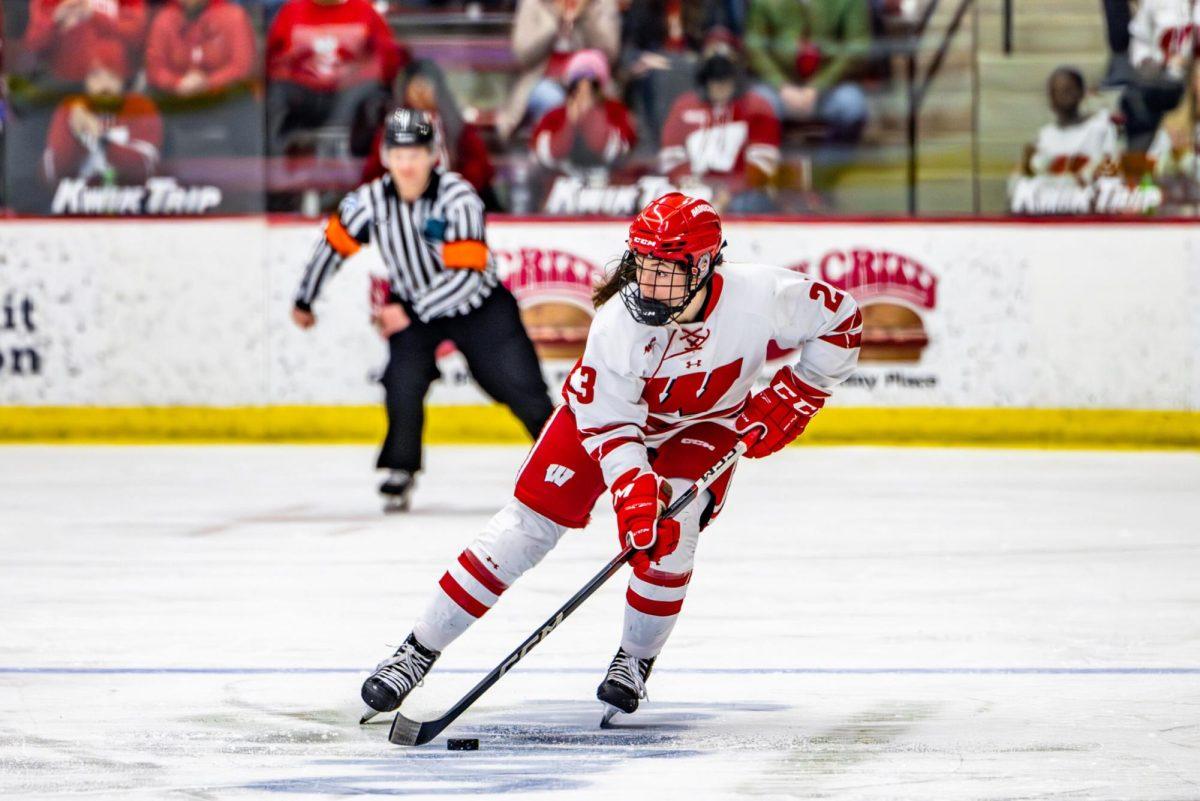If you were to ask a random Badger fan to tell you the first image or moment that comes to mind when thinking about University of Wisconsin sports, you might get a variety of answers — Jump Around at Camp Randall Stadium, the men’s basketball team’s Final Four appearance in 2015 or maybe the famed Fifth Quarter. Chances are their answer will almost certainly be a direct reference to high-budget programs that have become essentially synonymous with the UW’s school spirit and athletic identity.
For casual Badger fans, it may come as a surprise that these teams — Badger football, men’s basketball, or men’s hockey — are not nearly the most-winning programs on campus. Not even the volleyball program — with four conference championships in the last five years — can claim to be among the most winning.
But for decades, the women’s hockey team has quietly been collecting some impressive hardware in the trophy case — seven national championships and nine conference titles all within the last 20 years. Last month, the Badgers appeared once again in the national championship game, losing a heartbreaker to Ohio State. But given the general lack of buzz on campus surrounding the team’s success this season and in prior years, you would have been hard-pressed to realize just how dominant the Badger women’s hockey team truly is.
Certainly, gender disparities in media coverage of the women’s hockey team contribute to the program’s relative lack of clout. When the Badgers punched their ticket to the women’s Frozen Four, the @UWBadgers Instagram account made a single post celebrating their accomplishments. While the women’s hockey team certainly deserved the media recognition, many of the high-quality edits and in-depth coverage seem reserved for high-budget — usually men’s — programs.
The number of posts on the @UWBadgers Instagram account demonstrates this dynamic. The women’s hockey team received six posts during their national championship playoff run. The men’s basketball team, who were first-round exits in March Madness, received seven.
While the coverage on university-run social media accounts is far from perfect, many other media outlets are even further behind in catching up with the rise of women’s sports. Badger football and men’s basketball teams enjoy a host of multimedia coverage — talk radio shows, consistent appearances on national television and season-long attention from large newspapers. All this coverage culminates to produce an effect that centralizes the importance of high-budget men’s programs and creates a cycle of invisibility for smaller-budget, women’s programs.
This is not to suggest the men’s basketball team, or other high-budget programs, are somehow undeserving of their media attention, but rather that women’s athletic programs deserve a fairer portion of the spotlight. The success of the women’s hockey team should speak for itself.
Even those who tend to be persuaded by market logic, that is, the idea that there is a lack of demand for women’s sports, which then somehow justifies a lack of exposure, would be shocked to realize the statistics of the recent explosion in viewership and fanbases for women’s sports. According to CNBC, women’s sports, particularly at the collegiate level, are responsible for over a billion dollars in generated revenue over the last year. An audience for women’s sports already exists, and now UW needs to tap into that demand to allow these programs to enjoy their full potential and support.
An obsession with athletic programs’ profitability is also in opposition to the mission of the university itself. According to the Athletic Department’s mission statement, the university aims to allow student-athletes to grow in academic, social and athletic dimensions. But if the university has built a popular sports culture — almost exclusively tied to the football and men’s basketball programs — questions of inequity in the department’s mission arise.
These high-budget programs unquestionably have greater ease and access to these “opportunities” than other lower-budget programs do, largely generated by media exposure and the channels that creates for millions of fans across the state and country.
Fiscal responsibility is always a sound practice and the profitability of athletic programs should not be disregarded entirely, but over-emphasis on this dimension comes at the expense of the Athletic Department’s mission statement and sidelines programs that otherwise have much potential. After all, the university is a publicly-funded institution of learning — not a professional sports league.
Even if we concern ourselves with profitability, getting fans in seats is rarely an issue for the Badger women’s hockey team. During the past 2023-24 season, the Badgers beat out all other women’s hockey teams in attendance, averaging a near sellout at every game. The volleyball team also held multiple attendance records, before the Nebraska women’s volleyball team broke their record last season.
Years ago, UW recognized the growing demand for engagement with women’s sports. In 2012, the university opened LaBahn Arena — the second of its kind to be purpose-built for women’s hockey among other uses. This move was and continues to be a substantial investment in women’s sports programs and is emblematic of UW’s efforts to provide material support for women’s athletics. Now over a decade later, the university needs to continue to strive to promote women’s sports — irrespective of misguided concerns over profitability and market performance.
Jack Rogers (jrogers@badgerherald.com) is a sophomore studying Chinese, economics, and political science.



